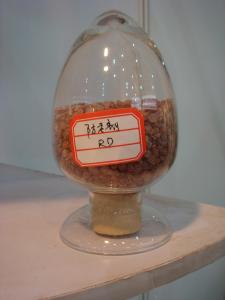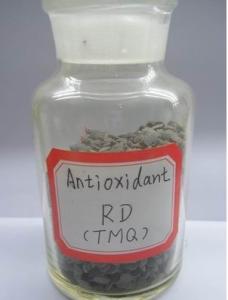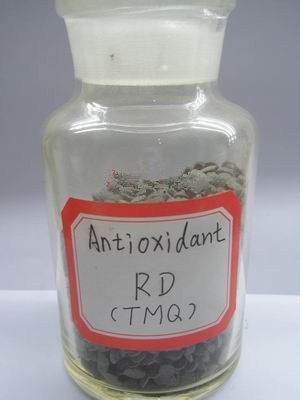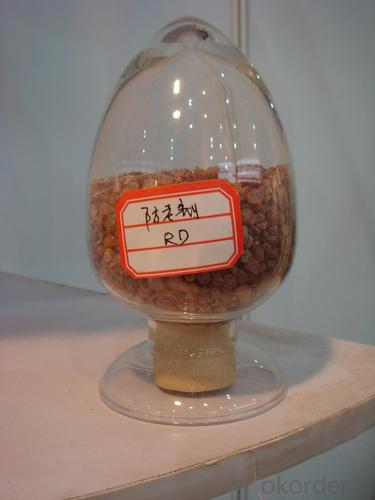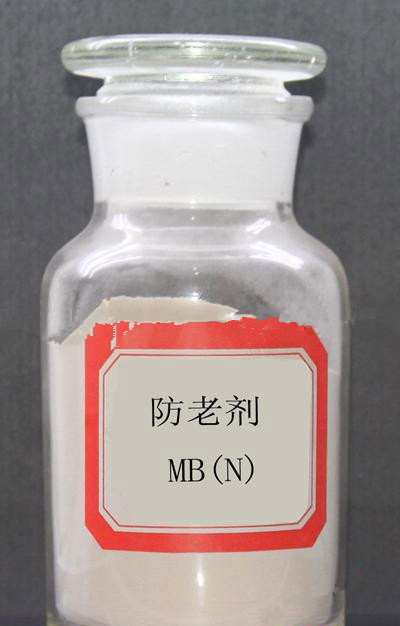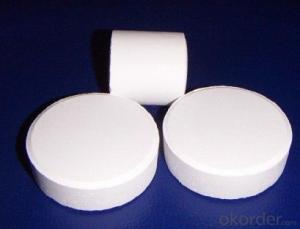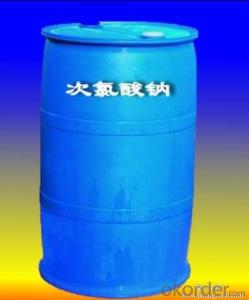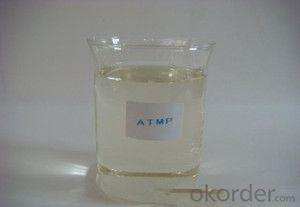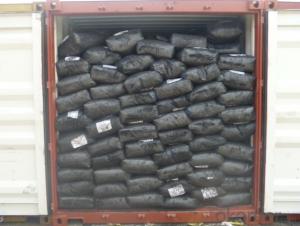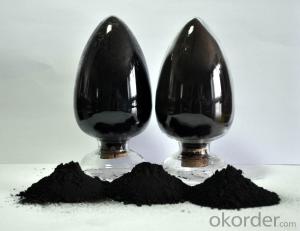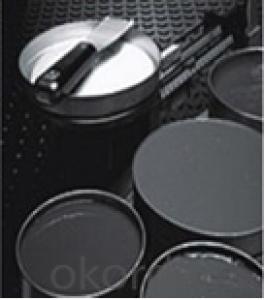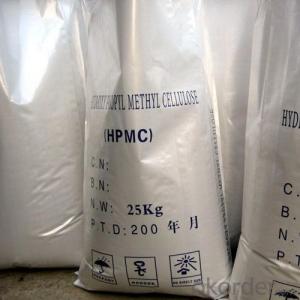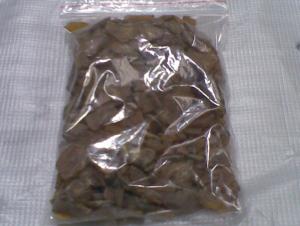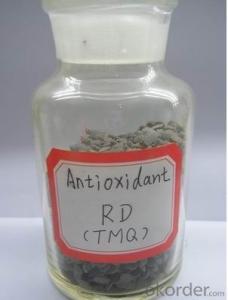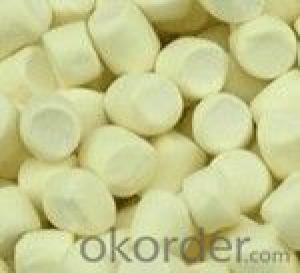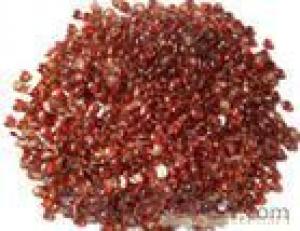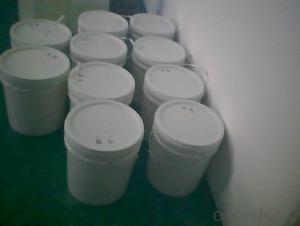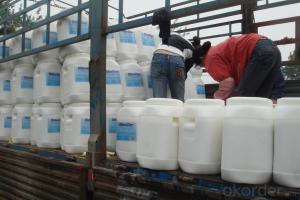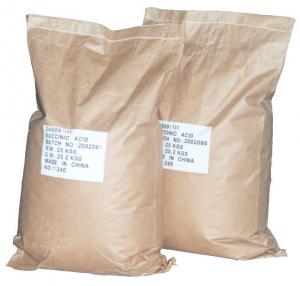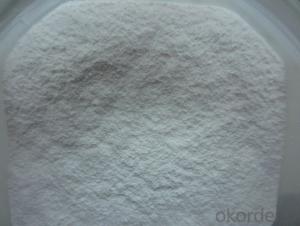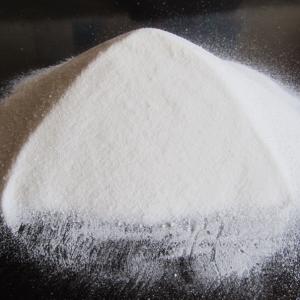Rubber Antioxidant TMQ(RD)
- Loading Port:
- Tianjin Port
- Payment Terms:
- TT or LC
- Min Order Qty:
- 1 Metric Ton m.t.
- Supply Capability:
- -
OKorder Service Pledge
OKorder Financial Service
You Might Also Like
Details Of Rubber Antioxidant TMQ(RD) :
Chemical Name: Polymerized 2,2,4trimethyl-1,2-dihydroquinoline
Molecular Weight: (173.26)n
CAS No.:26780-96-1
Executive standard: GB/T 8826-2003
Specification Of Rubber Antioxidant TMQ(RD) :
Item | Index | ||
High Content | High Class Product | First Class Product | |
Appearance | Amber to light brown flake or granular | ||
Softening Point ℃ | 90.0+10.0 | 80~100 | |
Heat Loss % ≤ | 0.30 | 0.30 | 0.50 |
Ash% ≤ | 0.20 | 0.30 | 0.50 |
Assay % ≥ | 77.0 | -- | -- |
Isopropyl-bis aniline % ≤ | 0.20 | -- | -- |
Issolubles in alcohol % ≤ | 0.50 | -- | -- |
Properties Of Rubber Antioxidant TMQ(RD) :
Pale yellow to amber power or thin.Nontoxic Not soluble in water, soluble in benzene.Chloroform,acetone and carbon disulfide,Miro-soluble petroleum hydrocarbons.
Application Of Rubber Antioxidant TMQ(RD) :
The product is particular excellent kinds od eneral-purpose ammonia anti-ageing agent.Ti particular suit to full-stell,semi-steel radial tire and it apply to many kinds of the tires,rubber tube,gummed tape, rubber overshoes and general industrial rubber producers and also suits to emulsion products.
Packing Of Rubber Antioxidant TMQ(RD):
25kg paper bag inner with PE bag.
Storage Of Rubber Antioxidant TMQ(RD):
The product should be stored in the fry and colling place with good ventilation. The product should be avoid hot sunshine.
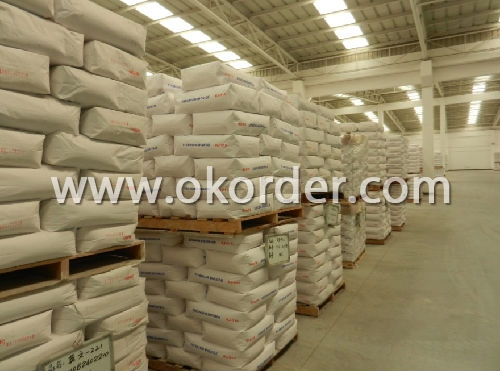
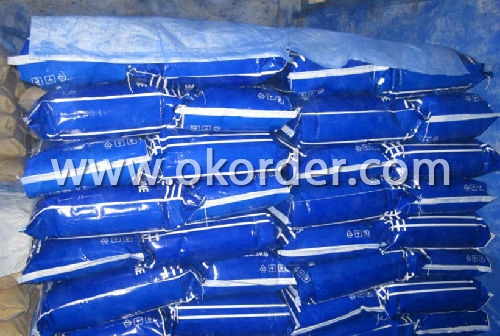
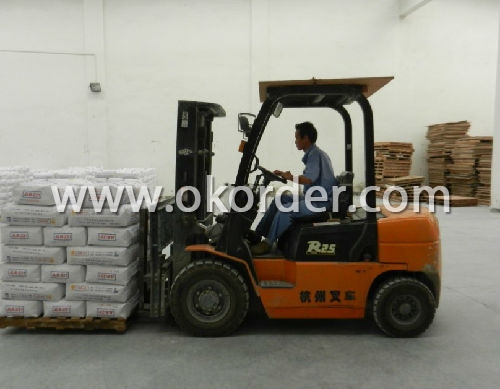
- Q: When there is a catalyst in the chemical equation, it is not necessary to match the atoms of the catalyst
- No, the catalyst is written above the equal sign, not the reactants, nor the product
- Q: Is it faster or slower? The What if you do not?
- The catalyst is divided into: positive catalyst and negative catalyst, positive catalyst accelerates the reaction rate, and negative catalyst slows down the reaction rate. Regardless of the positive and negative of the catalyst, it only changes the rate of the reaction, does not change the nature of the reaction, and the reaction, the chemical nature of the catalyst will not change!
- Q: Like biological and industrial reations. Thanks.
- Reactions that have high Activation Energy need catalysts to speed up reactions. These reactions aren't spontaneous since the reactants do not have enough energy to overcome the activation energy barrier. Catalysts are compounds that speed up reactions by providing an alternative pathway for the reaction. It is a common misconception that catalysts lower the activation energy. It doesn't actually lower the activation energy, instead it provides an alternative pathway with lower activation energy. For example, breakdown of hydrogen peroxide happens in nature but, relatively slowly. When you add a little bit of manganese dioxide, the breakdown happens a lot faster. Another example is, breakdown of glucose in the body. It is facilitated by an enzyme called amylase (or carbohydrase). An industrial example is the use of vanadium pentoxide (V2O5) in the Contact process, where SO2 is converted to SO3 in the presence of V2O5. Hope that helps!
- Q: Is the reaction of the exhaust purification of cars (carbon monoxide and nitrogen
- 2NO2 + 4CO = catalyst = N2 + 4CO2
- Q: How does the catalyst affect chemical balance? Why the catalyst has no effect on the chemical equilibrium, for v-t diagram
- Negative catalyst increases the activation energy, so that the reaction time becomes longer
- Q: Why can't catalysts make an unfavorable reaction favorable?Can anyone give me a relatively simple explanation for this?Thank you so much in advance!
- Catalysts, as enzymes, only change the activation energy (the energy the compound needs to gain to transform into products), they don't change the Gibbs energy values of reactants nor products. Therefore, if the delta G of the reaction is positive, it'll still need free energy to complete. They make a reaction complete faster than in normal conditions, but don't change the actual possibility for that reaction to happen. In the human body, a lot of reactions of catabolism have a positive G value and these reactions needs to get energy from other coupled reactions that have a negative value, so the total value is still negative. Many of them use hydrolysis of ATP to provide that energy, as its hydrolysis is about -30 kJ/mol in physiological conditions. I don't know what class you're in to ask this question, so can't really know if this answer is too simple or complicated for u... sorry in advance! Jo?l
- Q: In the chemical reaction, why can the catalyst speed up the reaction rate
- Platinum and rhodium catalyzes the conversion of carbon monoxide and nitrogen oxides to carbon dioxide and nitrogen, which are used in the conversion of automobile exhaust gases, and in most cars.
- Q: Chemistry why the catalyst can be equal to speed up the positive reaction rate
- Since the catalyst only changes the activation energy and the amount of reactivity can be reduced, the amount of reaction energy is also reduced. Therefore, a positive catalyst is also a good catalyst for its reaction. Speed up the same multiple.
- Q: What is a chemical catalyst?
- A substance that participates in chemical reactions but does not change the quality and chemical properties. It can change the reactant activation energy, speed up or slow down the reaction rate.
- Q: What is the reaction in chemistry?
- Industrial production of ammonia, ethanol, industrial synthesis of ammonia, ethanol catalytic oxidation, acetaldehyde oxidation into acetic acid, ethyl acetate preparation, the transformation of automobile exhaust, benzene substitution reaction and addition reaction, some other addition reaction of hydrocarbons, Ethanol dehydration to produce ethylene and so on
1. Manufacturer Overview
| Location | Hebei, China |
| Year Established | 1996 |
| Annual Output Value | US$ 5 Million - US$ 10 Million |
| Main Markets | North America; South America; Eastern Europe; Southeast Asia; Africa |
| Company Certifications | ISO9001; |
2. Manufacturer Certificates
| a) Certification Name | |
| Range | |
| Reference | |
| Validity Period |
3. Manufacturer Capability
| a) Trade Capacity | |
| Nearest Port | Tianjin Port |
| Export Percentage | 21% - 30% |
| No.of Employees in Trade Department | 5-10 People |
| Language Spoken: | English; Chinese |
| b) Factory Information | |
| Factory Size: | Above 10,000 square meters |
| No. of Production Lines | Above 6 |
| Contract Manufacturing | Design Service Offered; Buyer Label Offered |
| Product Price Range | High; Average |
Send your message to us
Rubber Antioxidant TMQ(RD)
- Loading Port:
- Tianjin Port
- Payment Terms:
- TT or LC
- Min Order Qty:
- 1 Metric Ton m.t.
- Supply Capability:
- -
OKorder Service Pledge
OKorder Financial Service
Similar products
Hot products
Hot Searches
